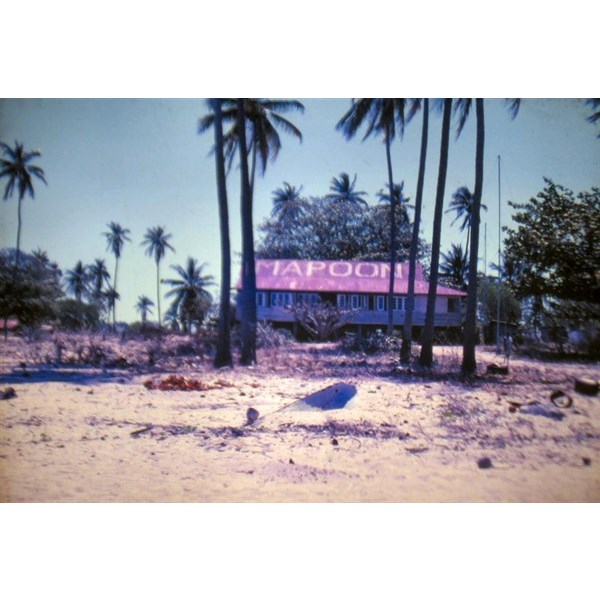Hi all,
As we are now at another remote location I thought I may share some very interesting history about the place ...........
Before I start I need to make clear about the 2 "Mapoons", yes there are 2 of them, the best known one is "New Mapoon" and it is up near
Bamaga, we are at "Old Mapoon", 80 odd K's north of
Weipa, not that far as the crow flies from
Bamaga, about 190 k's...........
I apologize in advance (not really, that's just for the copy n paste critics hahah) as most is copy n paste so bear with it.....
---------------------------------------------------------------------
In 1606, Dutch VOC ship the Duyfken reached the west coast of
Cape York, in northern Queensland. On the peninsula, the crew came into contact with the Indigenous people of Australia. This event was later documented as the first meeting on Australian soil between the indigenous people of Australia and Europeans. In 2006, a Dutch parliamentary delegation visited Australia to celebrate the special connection between the Netherlands and Australia, which then dated back 400 years. The delegation proposed the idea of a permanent memorial on the Western
Cape York Peninsula.
With support from the
Mapoon Aboriginal Shire Council, the Dutch government, the government of Queensland, Rio Tinto Alcan, Van Oord Australia and the Western Cape Communities Trust, the memorial was established near
Mapoon in a garden area with local trees that were planted for the occasion.
--------------------------------------------------------------------
Mapoon community is situated on the traditional lands of the Tjungundji people. A church mission commenced near Trathalarrakwana (unconfirmed spelling of a Tjungundji word meaning ‘Barramundi story place’) or
Cullen Point on 28 November 1891.
Mapoon Mission was established under the name Batavia River Mission by
Moravian missionaries on behalf of the Presbyterian Church of Australia, with
Queensland Government financial assistance, on land reserved by the Government under the Crown Lands Act of 1884. Within a few years the mission became known as
Mapoon, a Tjungundji word meaning ‘place where people fight on the sand-hills’. As the influence of the mission widened in the surrounding lands, the reserve was extended south to the Mission River near
Weipa. Some of the traditional owner groups who eventually came to live at
Mapoon included the Mpakwithi, Taepithiggi, Thaynhakwith, Warrangku, Wimarangga and Yupungathi people.
In October 1901,
Mapoon was gazetted as an industrial school under the Queensland Industrial and Reformatory Schools Act and Northern Protector of Aboriginals W.E. Roth noted in his annual report that prior to this time the government had been sending to
Mapoon ‘waifs and strays from the Gulf country generally, but so far without the legal status of their being “neglected” children’.
For about the next thirty years, many mixed-descent children were removed from their families on stations and towns, such as
Burketown,
Croydon and
Normanton, in the Gulf country and sent to
Mapoon to be raised by the missionaries. Many of these removed people were also “adopted” by the traditional owners to give them a safe
home in traditional country which was foreign to them.
At a conference of church and government officials held at
Mapoon in April 1954 a policy decision was made to close
Mapoon and evacuate the people to
Weipa or other stations, or to ‘assimilate those ready for exemption [from the Protection Act] into the Australian way of life elsewhere’. The residents of the community were not consulted about the decision but merely told that the closure had been decided. The
population of
Mapoon in 1954 was 285.
On 14 November 1963, the Officer-in-Charge of Police at Thursday Island received official instructions from the Director of Native Affairs, Pat Killoran, to remove twenty-three Aboriginal residents from
Mapoon to
Bamaga.

Old Mapoon Mission house 1969
After the 1964 closure, former residents led by traditional people such as Jean Jimmy
continued to lobby for the re-opening of their community. In 1974 several families led by Jerry and Ina Hudson returned and ten years later the Marpuna Community Aboriginal Corporation was established. The Marpuna Corporation gradually built up the community at Rugapayn (
Red Beach) to a stage where people were able to resettle permanently and government recognition followed.
On 26 April 1989 a Deed of Grant of Land in Trust (DOGIT) for ‘Aboriginal Reserve Purposes’ under the Land Act (Qld.) and covering 1,839 square kilometres, was handed over to the
Mapoon people by the Queensland Government. The trustees included several traditional owners. This land mass was later reduced in size and the trustee representatives also reduced to three Trustees. The
Mapoon lands continued to be administered by trustees appointed by the Queensland Government.
In 2013 the trustee structure was changed and divided into two parts. Two new Trustees where created and assigned responsibilities for these parts:
1.
Old Mapoon Aboriginal Corporation which assumed responsibility for the majority of the DOGIT lands; and
2.
Mapoon Aboriginal Shire Council which assumed responsibility for a newly created town area.
The trustees have a plan to work together with respect to land administration matters and land use for the future needs of
Mapoon.